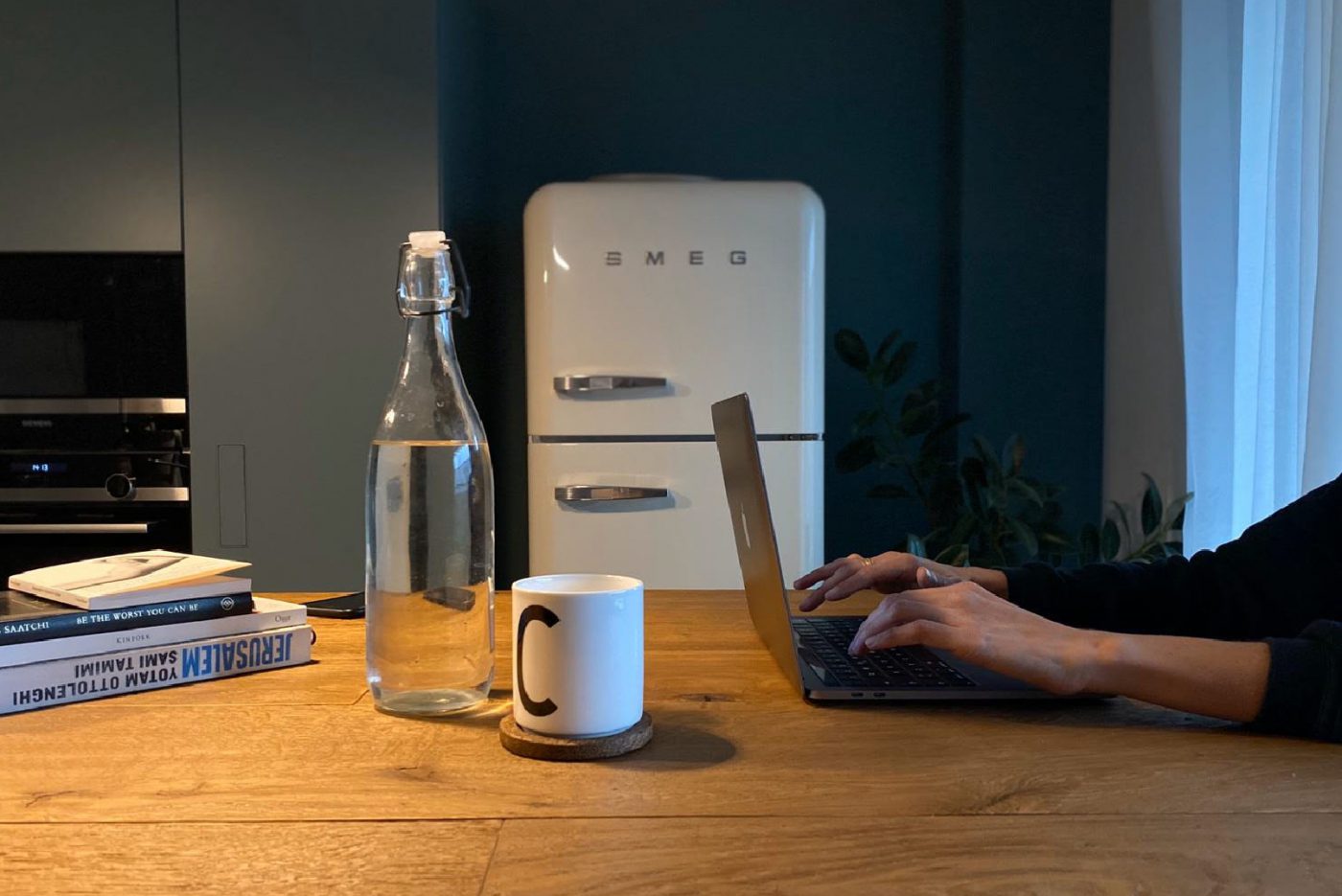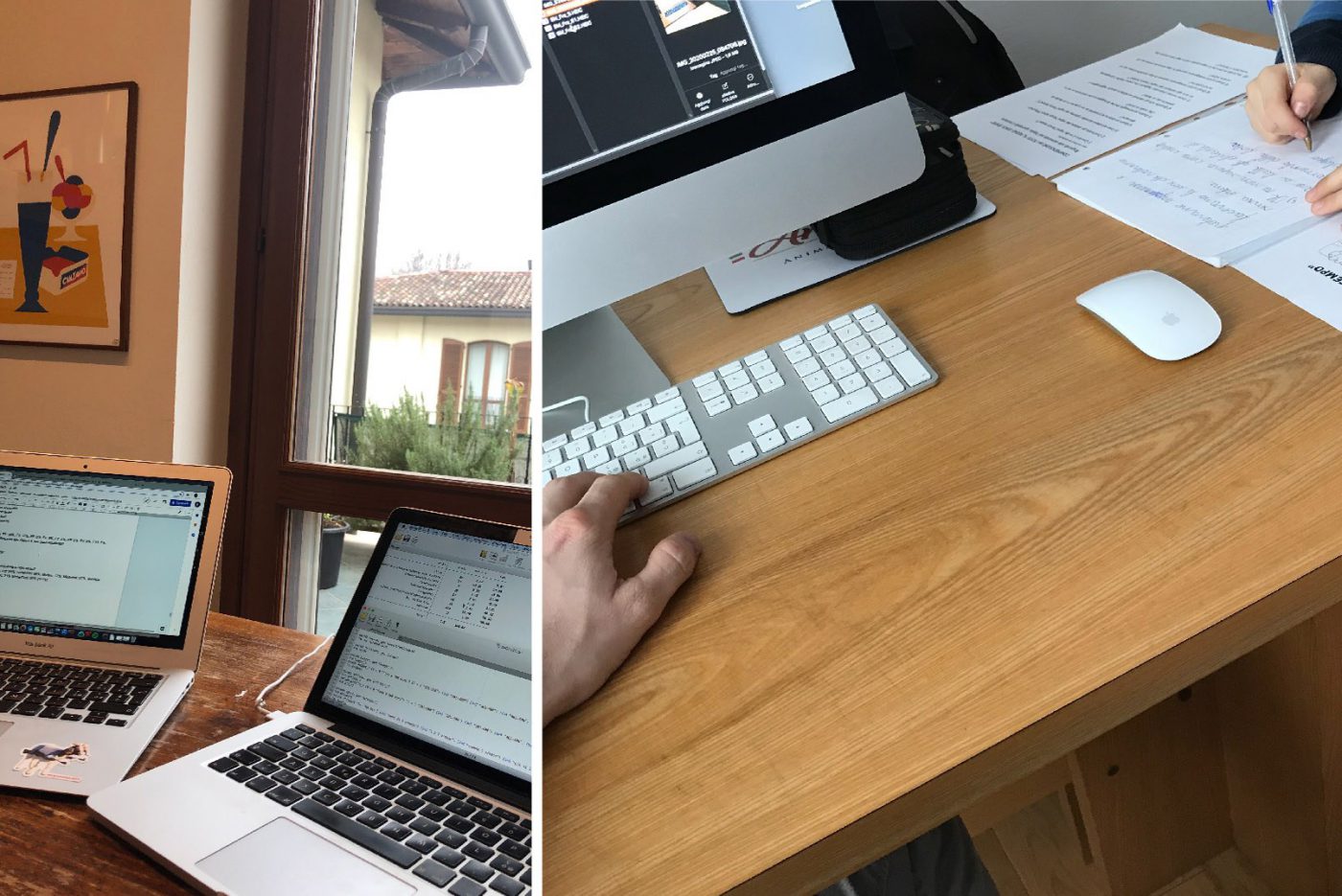As an agency, working as a team with a collaborative approach is a fundamental part of our professional activities, and so a number of queries immediately came to mind:
How can you conduct a brainstorming session with 10 people and produce a concept, on the basis of input from all the participants who are working remote, perhaps with unreliable connections?
How can you organise a crit session (our feedback meetings) without the possibility of physically seeing the various prototypes?
When you are operating in a distance working mode, how can you attain the same output as from a face-to-face workshop?
After three weeks, we feel that we have learnt a few tricks, and we think that they are worth sharing with people who, like us, want to work as part of a team, and have to do so remotely.

A rhythm to sharing
We have tried the idea of 15-minute meetings every morning, to say hello, plan the day’s activities, and to share any doubts or critical issues.
A good routine for staying connected and starting every day with the right burst of energy.
Prepare the setting
Working remote requires even more organisation than when everyone is physically present.
We have learnt to be even clearer about why we are staging a video-meeting, the meeting’s objectives and the expected output. A memo by the project owner enables the rapid alignment of all participants, thus reducing the time required for coordination which, in the current situation, risks absorbing a large proportion of our working hours.

Privileging written communication
Another important thing that we have learnt in this period is asynchronous working, in consideration of everybody’s time. Using brainwriting as a method of brainstorming helps to gather ideas in written format (using Google Suite), commenting and improving them before actually discussing them verbally. This reduces alignment time and ensures that no ideas are lost.
Planning and sharing tools such as Basecamp or Trello are very useful, as they enable participants to be aware of all the team members’ tasks and deadlines.

Expect the unexpected
With our clients, we have seen that it is useful to anticipate the possibility of audio and video problems, sending them simple guidelines about the system chosen for use.
It is also important to collect the telephone numbers of the meeting’s participants, so that they can be contacted in the case of connectivity issues.

Respect people’s time
Distance-working timescales are different from face-to-face situations, and so it is best to avoid excessively long calls, and leave time for individual reflection between one brainstorming session and the next, in order to make the moments of sharing more productive.
Choose the right tools
Remote workshops have existed for some time now, by means of highly flexible and collaborative tools such as Mural and Miro. Both make it possible to work on shared whiteboards, contributing inputs, using images and shapes.
We have found that a double screen is very useful in this regard, and a PC plus a mobile phone are sufficient. The PC screen becomes the tool displaying the whiteboard, while the mobile phone can be used for taking part in the video conference and watching the other people at work, in order not to lose sight of the participants’ attention, mood and concentration.
Even our ethnographic research has continued. In this period, our interviewees have demonstrated their desire to make their own contribution and facilitate everybody’s work. A video-call made using FaceTime or Google Meet enables us to gain access to people’s homes and observe their routines (something that has been amplified over the last few weeks), and in any case receive interesting insights.

Trusting the team
The starting point for all these tips is one’s trust in the team, and its capability to find alternative solutions, new methods and different tools in even the most adverse conditions.
For us, reducing the amount of communication and giving people sufficient time are simply minimal procedural innovations, a small discovery in this period of such complexity.
Cinzia Malerba, Strategic Design Lead at CBA

